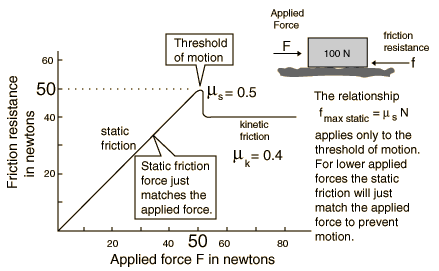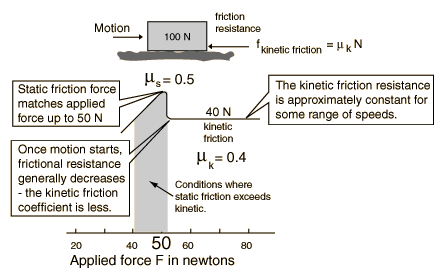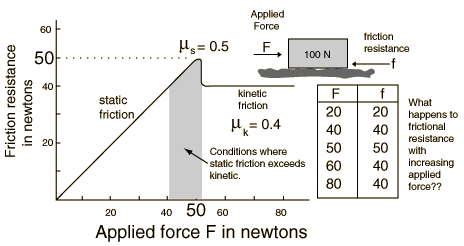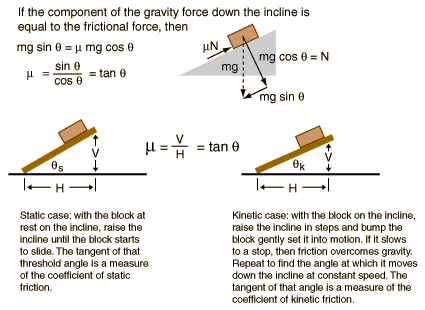Static Friction
Static frictional forces from the interlocking of the irregularities of two surfaces will increase to prevent any relative motion up until some limit where motion occurs. It is that threshold of motion which is characterized by the coefficient of static friction. The coefficient of static friction is typically larger than the coefficient of kinetic friction.

In making a distinction between static and kinetic coefficients of friction, we are dealing with an aspect of "real world" common experience with a phenomenon which cannot be simply characterized. The difference between static and kinetic coefficients obtained in simple experiments like wooden blocks sliding on wooden inclines roughly follows the model depicted in the friction plot from which the illustration above is taken. This difference may arise from irregularities, surface contaminants, etc. which defy precise description. When such experiments are carried out with smooth metal blocks which are carefully cleaned, the difference between static and kinetic coefficients tends to disappear. When coefficients of friction are quoted for specific surface combinations are quoted, it is the kinetic coefficient which is generally quoted since it is the more reliable number.
Friction concepts
| HyperPhysics***** Mechanics | R Nave |


